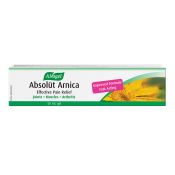A landmark study published in 2017 led the UK's National Institute for Health to update their guidelines for back pain.
The change?
NSAIDs should no longer be considered as standalone treatment for back pain. Considering only 1 in 6 patients taking oral NSAIDs like paracetamol experience a reduction in pain, and that those taking them are twice as likely to experience nausea, vomiting and stomach ulcers compared to placebo...it just wasn't worth the risk anymore.[1,2]
The authors put it more poignantly,
"...the magnitude of the difference in outcomes between the intervention and placebo groups is not clinically important. At present, there are no simple analgesics that provide clinically important effects for spinal pain over placebo..."
Pain can be debilitating, and it's important to seek treatment if you're experiencing it. Too often, people try to tough it out and ignore the pain, but this can only make things worse in the long run. There are a variety of treatment options available for the different types of pain, and it's important to find the one that's right for you. If you're not sure where to start, talk to your care provider about the different options and find the one that's best for you.
What are the types of pain?
There are many different types of pain, but some are more common than others.
- Neuropathic pain, for example, is a type of pain that results from damage to or dysfunction of the nerves. It can be very difficult to treat, and often requires a combination of therapies.
- Nociceptive pain is the most common type of pain, and is caused by the activation of nociceptors, which are specialized nerve endings that respond to potentially harmful stimuli. Nociceptive pain can be either acute or chronic, and is usually described as a throbbing, aching, or burning sensation.
- Radicular pain is a type of pain that can be caused by several things, including nerve compression, spinal cord compression, and herniated discs. It is typically characterized by a radiating pain that extends down the arms or legs. Despite being more diffuse than other forms of pain, make no mistake, radicular pain can be very debilitating.
One of the most important things to remember about pain is that it is highly individualized. What works for one person may not work for another, so it's important to work with your healthcare team to find solutions that suit your case.
What is chronic pain and what are the symptoms?
It most likely does not surprise you to learn that pain management is the branch of medicine concerned with, you guessed it, the relief of pain. It encompasses a range of different techniques and treatments, from medication to surgery. The main goal is to help patients manage their pain so they can live as full and productive lives as possible.
Chronic pain is usually defined as any pain that lasts for longer than 12 weeks. It can be caused by a few different things, from injuries to illnesses. Some common chronic pain conditions include migraines, arthritis, endometriosis, multiple sclerosis, and fibromyalgia. Chronic pain can be extremely debilitating, and it can make it difficult to perform everyday activities.
What are conventional approaches to pain management?
There are many different types of pain management treatment options available. One common type of treatment is medication. There are many different types of medications available to help manage pain, including over-the-counter medications and prescription medications. Some people may also choose to use integrative and complementary therapies, such as acupuncture or massage, to help manage their pain.
There are a variety of different medications that can be used to manage pain. The type of medication that's right for you will depend on the severity of your pain, what other medical conditions you have, and your personal preferences.
Some common pain medications include over-the-counter drugs like ibuprofen and acetaminophen, as well as prescription drugs like opioids and antidepressants.
- Ibuprofen is a non-steroidal anti-inflammatory drug (NSAID) that is used to treat a variety of different conditions, including pain, fever, and inflammation. It works by blocking the action of a specific enzyme known as cyclooxygenase that plays a role in producing prostaglandins. By directly blocking the production of prostaglandins, ibuprofen can help to reduce pain and inflammation.
- Acetaminophen (paracetamol) is a medication that is used to treat pain and fever. It works by raising the body's threshold for pain, which means that it takes more pain to feel discomfort. Acetaminophen is available over the counter in both prescription and non-prescription forms. As you'll recall though, this is ineffective for back pain and therefore, no longer recommended.
- Opioids are a type of medication that are used to treat moderate to severe pain. They work by binding to the body's opioid receptors, which are found in the brain and spinal cord. This has the effect of blocking pain messages and therefore, the sensation of pain.[3] Opioids can be extremely effective at reducing pain, but they also come with a risk of dependence and addiction.
- Antidepressants are a type of medication that is commonly used to treat depression. However, they can also be effective at treating pain. Antidepressants work by increasing levels of certain chemicals in the brain, including serotonin and norepinephrine. These chemicals are thought to play a role in pain perception.
Complementary treatments for chronic pain.
In addition to medication, there are non-pharmaceutical treatments that can be effective for chronic pain. These include acupuncture, massage, yoga and even a bit of herbal help.
- Acupuncture. Acupuncture is a treatment that involves the insertion of thin needles into the skin at specific points. It is based on the belief that this can help to Balance the body's energy and improve well-being. A review of studies found that acupuncture may be helpful for treating different types of pain, including neck pain, shoulder pain, and osteoarthritis pain.[4]
- Massage. Massage therapy involves the manipulation of the soft tissues of the body to improve circulation, relax muscles, and relieve tension. A review of studies found that massage may be helpful for treating different types of pain, including headaches, fibromyalgia, neck pain, and lower back pain.[5]
- Yoga. Yoga is a form of exercise that includes various stretching and breathing exercises. The motion and breathing activate the parasympathetic response in the body, the rest-and-digest aspect of the human experience. This results in more stable blood pressure, lower heart rate, reduced muscle tension and even changes to brain wave patterns. This is why yoga is so beneficial for both the emotional and physical experience of pain conditions.[6]
- Absolüt Arnica. This topical gel made from fresh Arnica montana has undergone three separate clinical trials without any significant adverse effects, making it safer than some of the oral anti-inflammatory medications. It has even gone head-to-head with a 5% topical ibuprofen gel and was shown to be as effective in reducing pain associated with osteoarthritis of the hands.[7] Another study found it effective in reducing the pain associated with osteoarthritis of the knees.[8] These benefits are attributed to the action of its high concentratoin of sesquiterpene lactones that slow the destruction of cartilage in the joint. [9]
How can you be proactive about pain management?
Movement as medicine is one of your greatest allies when it comes to preventing pain in the first place. Whether it is yoga as highlighted already or even cleaning the house, just keep moving when and where you can. A research team in 2014 looked at the impact of movement therapies for the self-management of chronic pain symptoms. Pain like this attacks every aspect of a person including the physical and emotional. Exercise therapies were shown to support every aspect of the human experience in a safe, effective, and most importantly, patient-centric way.[10]
When to see a doctor about chronic pain
If you're experiencing chronic pain, the first step on your journey to recovery is ensuring you understand why the pain is present. This involves a diverse care team who want you to be the healthiest, pain-free version of yourself.
Reference
1. Machado, Gustavo C., et al. "Efficacy and safety of paracetamol for spinal pain and osteoarthritis: systematic review and meta-analysis of randomised placebo controlled trials." BMJ 350 (2015).
2. Machado, Gustavo C., et al. "Non-steroidal anti-inflammatory drugs for spinal pain: a systematic review and meta-analysis." Annals of the Rheumatic Diseases 76.7 (2017): 1269-1278.
3. Galligan, James J., and Hamid I. Akbarali. "Molecular physiology of enteric opioid receptors." American Journal of Gastroenterology Supplements (Print) 2.1 (2014): 17.
4. Vickers, Andrew J., et al. "Acupuncture for chronic pain: update of an individual patient data meta-analysis." The Journal of Pain 19.5 (2018): 455-474.
5. Miake-Lye, Isomi M., et al. "Massage for pain: an evidence map." The Journal of Alternative and Complementary Medicine 25.5 (2019): 475-502.
6. Vallath, Nandini. "Perspectives on yoga inputs in the management of chronic pain." Indian Journal of Palliative Care 16.1 (2010): 1.
7. Widrig, Reto, et al. "Choosing between NSAID and arnica for topical treatment of hand osteoarthritis in a randomised, double-blind study." Rheumatology International 27.6 (2007): 585-591.
8. Knuesel, Otto, Michel Weber, and Andy Suter. "Arnica montana gel in osteoarthritis of the knee: an open, multicenter clinical trial." Advances in Therapy 19.5 (2002): 209-218.
9. Wagner, Steffen, Andreas Suter, and Irmgard Merfort. "Skin penetration studies of Arnica preparations and of their sesquiterpene lactones." Planta Medica 70.10 (2004): 897-903.
10. Lee, Courtney, Cindy Crawford, and Eric Schoomaker. "Movement therapies for the self-management of chronic pain symptoms." Pain Medicine 15.S1 (2014): S40-S53.







